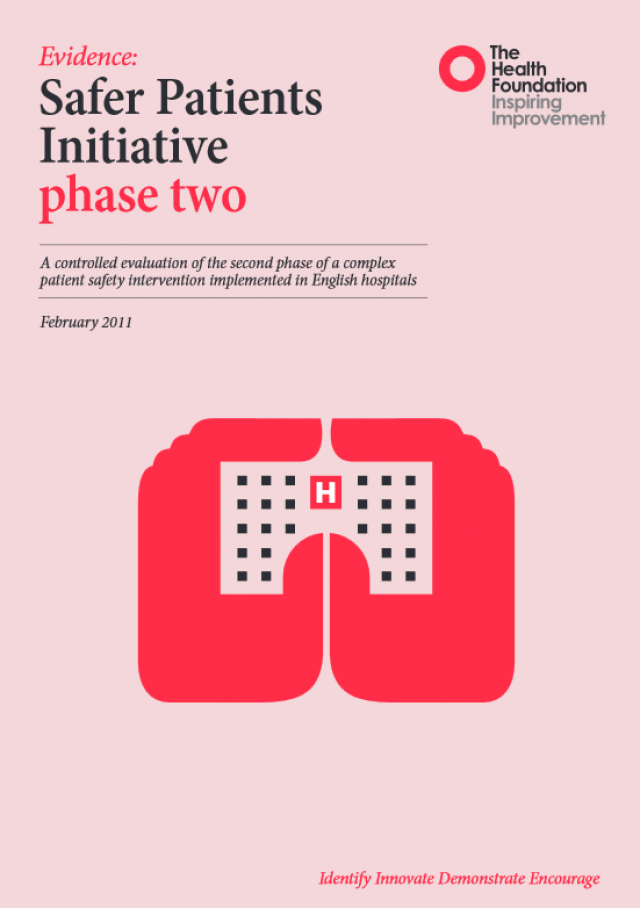Safer Patients Initiative: Phase 2 A controlled evaluation of the second phase of a complex patient safety intervention implemented in English hospitals
February 2011

Key points
- Nine NHS hospitals participated in phase two of the Health Foundation’s Safer Patients Initiative (SPI), and there were nine matched control hospitals.
- Only one dimension of the staff survey changed significantly (in favour of control hospitals).
- Measurements of vital signs and use of risk scoring improved markedly over time, but did so similarly in both control and SPI hospitals.
- Many aspects of evidence-based medical and perioperative care were good at baseline, leaving little room for improvement.
- There was a marked improvement in use of hand-washing materials and a dramatic decrease in hospital-acquired infections across all hospitals.
- A significant additive effect of the SPI on the measures included in the study was not detected.
- Many aspects of care are already good or improving across the NHS, suggesting considerable gains in quality across the board. These improvements might be due to policy activities, including some with features similar to the SPI, and the emergence of professional consensus on some clinical processes.
The Safer Patients Initiative (SPI) was a complex, large-scale intervention and the first major improvement programme addressing patient safety in the UK. This report covers the evaluation of the second phase.
The initiative was designed to test ways of improving patient safety on an organisation-wide basis within hospitals across the UK. Nine NHS hospitals in England and nine matched English control hospitals participated in the second phase.
Evaluation design
The controlled evaluation comprised five linked sub-studies:
- Before and after assessment of attitudes of front-line staff using a structured postal survey in both control and phase two hospitals.
- Case note review of the hospital records of high-risk patients in medical wards treated before and after the intervention in both control and phase two hospitals. Quality of care was measured by two teams who were independent of the hospitals – one assessed quality against specific standards (explicit review of acute medical care), and the other undertook holistic assessments (implicit review of acute medical care).
- Explicit case note reviews of high-risk perioperative care patients against specific standards, carried out by a third independent team.
- Indirect evaluation of hand hygiene by measuring used hygiene consumables from trend data already collected to compare the matched controls with the phase two hospitals.
- Measurement of outcomes: adverse events and mortality among high-risk patients admitted to medical wards; hospital-wide mortality; intensive care unit (ICU) outcomes; hospital-acquired infection rates and patient satisfaction. Comparisons were made of control hospitals versus the phase 2 hospitals at baseline and over time.
Related downloads
Further reading
Work with us
We look for talented and passionate individuals as everyone at the Health Foundation has an important role to play.
View current vacanciesThe Q community
Q is an initiative connecting people with improvement expertise across the UK.
Find out more

